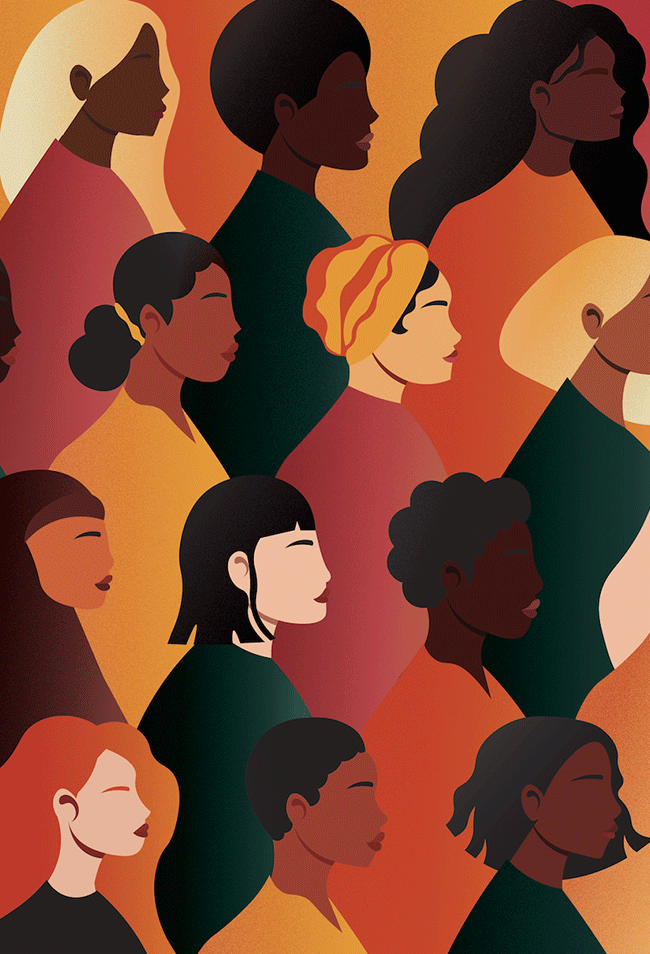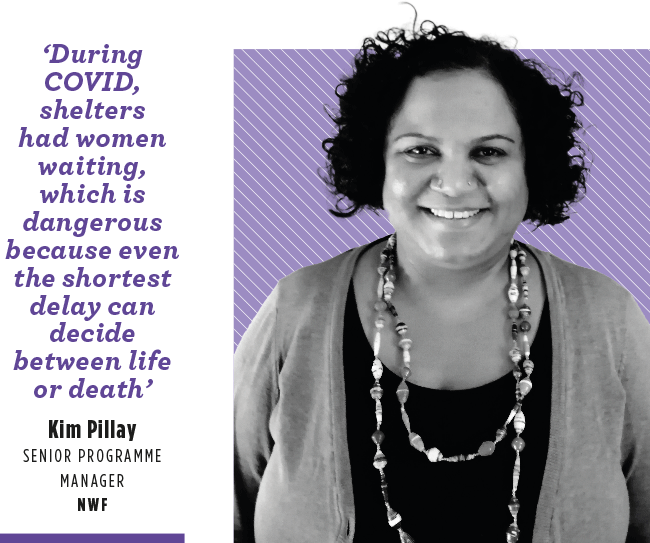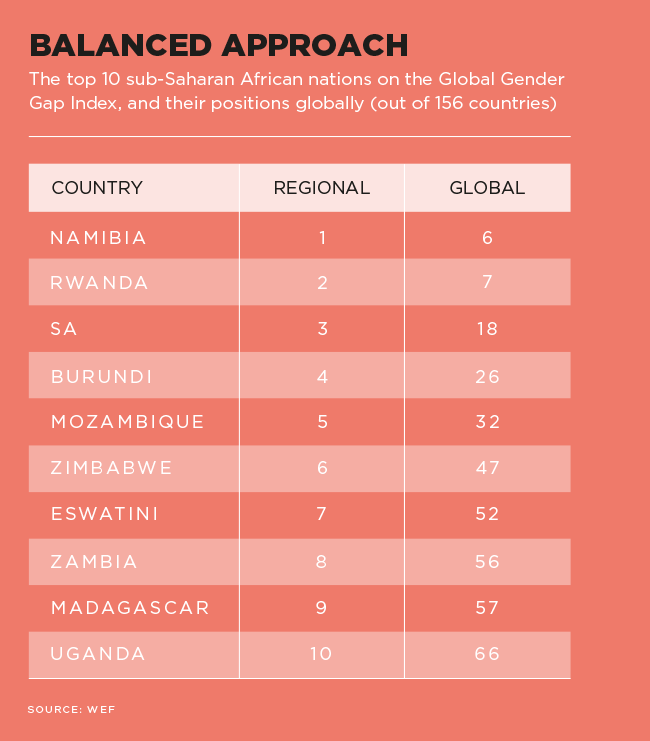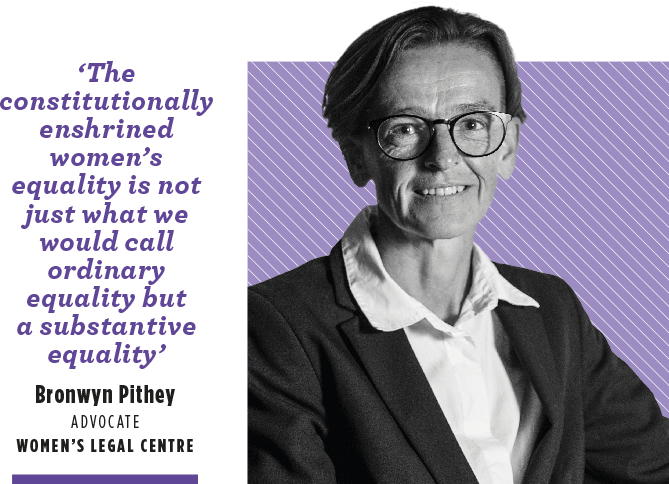Let’s get one thing clear… Empowering women does not mean disempowering men. Quite the opposite, in fact, because when women fully participate in the economy and have equal access to education, health and finance, every body benefits. Child health typically improves as a result, communities are uplifted, the standard of living rises, and GDP increases. Therefore gender equality is a key global indicator of economic growth and human development, not to mention of justice.
This also applies in reverse. ‘Societies that treat women badly are poorer and less stable,’ as the Economist puts it. ‘Oppressing women not only hurts women; it also hurts men.’
The article explores the cost of misogyny to society, and references ‘honour’ killings in Iraq, where women are being stabbed or shot by their own families merely for driving a car (and possibly meeting a man). Predictably, Iraq is at the bottom of the WEF’s Global Gender Gap 2021 index, coming 154th out of 156 countries.
The good news, however, is that SA ranks among the top 20 in the world – at 18th, with an overall gender gap index score of 0.78 (with 0 being the worst and 1.00 signalling that the gap has been closed and equality achieved).
While the Scandinavian countries Iceland, Finland and Norway take the top spots, SA was placed – perhaps surprisingly – before the UK (23rd), Canada (24th), the US (30th), Australia (50th) and Japan (120th), but is lagging behind Namibia (6th) and Rwanda (7th).
The index measures the inequality between female and male citizens in each country according to four categories, namely economic participation and opportunity; educational attainment; health and survival; and political empowerment. SA scores high regarding the political emancipation of women and has nearly achieved gender parity in education. However, in the context of the dysfunctional state-education system, the latter is no reason to celebrate as it effectively means that the majority of boys and girls are equally disadvantaged by sub-standard public schooling.
While the COVID crisis impacted both men and women in SA and the rest of the world, evidence suggests that women were affected to a greater extent. As a result, the global gender gap in 2021 widened by almost 0.6 percentage points over the previous year, according to the WEF. At the current rate, it will take women 135.6 years to catch up with men and participate on the same level in society and the economy.
The pandemic has set women empowerment back by worsening existing gender and socio-economic inequalities worldwide. Women were more affected by job losses than men because they frequently work in sectors directly disrupted by the lockdowns and social distancing, such as hospitality, food services and personal care. They also shouldered more of the childcare burden and home schooling when schools closed, which affects their ability to participate in the labour market. According to the International Labour Organisation, the employment of women dropped by 4.2% in 2020 compared to 2019 – worse than the 3% decline for men in the same period.
Most of the progress that SA has made in empowering girls and women since the start of democracy in 1994 lies in its enabling, liberal laws. Today the country is one of the best places on the planet for women – when seen from a legal perspective. The proclamation of the Constitution was a turning point for black women in particular, who had been disenfranchised during apartheid. But gender discrimination went across racial lines, as SA women of all races were legally considered minors in the not-so-distant past. This barred them from opening their own bank accounts and from other business transactions, leaving them dependent on their fathers, husbands or male relatives.
In 1996 the progressive new Constitution fully enshrined the equality of all women, irrespective of their race, religion, marital status, age and sexual orientation, and also granted them full personal and property rights.
Brownyn Pithey, an advocate at the NPO Women’s Legal Centre, highlights that ‘the constitutionally enshrined women’s equality is not just what we would call ordinary equality but a substantive equality, which really recognises that people start off from different places, and brings in the understanding of intersectionality between race and gender, poverty, class and so on’.
A WEF article on diversity explains that every person has multiple intersecting identities (such as those mentioned by Pithey, as well as age, sexual orientation and more), which can lead to specific types of discrimination or privilege. ‘White women, black men and black women may face some common issues in the workplace – a pay gap, for example – but research shows that the latter group often faces challenges specific to how their identities as both women and black people intersect,’ the article states.
In SA, the intersectionality of being a poor black woman is often referred to as the ‘triple burden’. There is even a word – misogynoir – for the specific type of discrimination black women face, according to the WEF.
Examples of misogynoir can be found in medical misdiagnoses, racial difference in pain management when giving birth, gendered racist abuse and harmful stereotypes, such as that of the ‘angry black woman’.
One shouldn’t assume, however, that SA women who are poor or black or rural or disabled (or all of these together) are necessarily disempowered. Many are strong women who manage their lives under very difficult circumstances, stand up for themselves and look after their families and communities.
The legal situation for women in SA continues to improve further through legislation such as the Employment Equity Act, which sets numerical targets for female employment; the B-BBEE Codes, which prioritise black women for management positions and preferential procurement; and, most recently, the three amended acts on gender-based violence (GBV) and domestic violence. These were signed into law in January 2022 to make it easier for survivors of such violence to access justice and support services, while imposing harsher bail conditions and stricter minimum sentencing for the perpetrators.
Which leads to the bad news… SA is one of the worst places on the planet when it comes the personal safety of girls and women. President Cyril Ramaphosa famously called GBVF (in which the F stands for femicide) the ‘second pandemic’. During the COVID pandemic the incidents of violence against women soared, which increased corporate action to address GBV within their own organisations, as well as to support survivors and raise awareness of the issue.
Quantifying the high rate of GBV is difficult because of under-reporting and data flaws in some of the sources. Police crime statistics for the period from January to March 2022 indicate that in those three months, 10 818 rapes were reported and 898 women murdered.
In response to the police stats on the previous quarter, according to which 11 315 rapes and 902 murders were committed between October and December 2021, women’s rights NGO People Opposing Women Abuse (POWA) issued a statement saying they were ‘very disturbed’ by these statistics but believed the actual numbers were even higher.
‘Police information-management systems need to be improved to capture the accurate number of murders, domestic violence and sexual violence statistics,’ says POWA. ‘We also need to ensure that the criminal justice system provides adequate feedback on the progress of cases, that it carries out proper investigations, and that there is no delay on arrest of perpetrators, so that [they] don’t feel free to carry out their crimes because they believe they will get away with them.
‘The criminal justice system regularly fails GBV survivors and cases often take long to finalise due to the DNA backlog, which causes more trauma for survivors. Cases are sometimes scratched off the roll because of lack of evidence due to lack of proper investigations, which means survivors don’t receive the justice they deserve.’
POWA was among the civil-society organisations that helped government develop the National Strategic Plan on Gender-Based Violence and Femicide, which was launched in 2020 to provide a multi-sectoral framework to strengthen a co-ordinated national response. The private-sector led GBVF Response Fund, which is part of the strategic plan, has already attracted more than R200 million in pledges from companies and organised business.
One of the fund’s 110 beneficiaries – or grant partners – is the New World Foundation (NWF) in Lavender Hill near Cape Town, a community-based NPO that runs an emergency safe-house for abused women and their children.
‘During COVID, shelters had women waiting, which is dangerous because even the shortest delay can decide between life or death,’ according to Kim Pillay, NWF senior programme manager.
‘Many GBV survivors have children, who witness their moms being abused. As this becomes the norm, the cycle of violence and abuse is often perpetuated, with girls growing into victims and boys into perpetrators. It’s hugely important to allocate funds to the secondary victims of GBV, these children, to teach them to unlearn such behaviour and break the cycle of violence.’
The National Shelter Helpline, set up in 2020 – which coincided when GBV surged – is staffed by social workers who find shelter places for GBV survivors. Pillay, who serves as vice chair of the Western Cape Women’s Shelter Movement, says the women are placed outside their own communities to prevent their abusers from finding them.
To alter the violent behaviour of men towards women, there is a need to change male thought patterns that drive violence against women, according to Christopher Isike, professor of African politics and international relations at the University of Pretoria. ‘For instance, seeing females as “property” can produce an entitlement mentality among males.
‘It is the feeling of “ownership” that gives males the audacity to want to keep controlling and brutalising females they are no longer involved with. Therefore, to change and possibly eradicate male violence against women in South Africa, intervention efforts must be targeted at changing how males see females.’
Isike writes in the Conversation that ‘when males are socialised to start seeing female as humans with rights too, just as they were perceived in pre-colonial times, they will start treating women with the decency, due regard and respect that they deserve’.
As adjusting perceptions to change behaviour can’t be legislated, he suggests other interventions to re-socialise boys and men. These could include changing the school and university curriculum to highlight women’s achievements alongside those of men, or co-parenting children from birth ‘to break the backbone of patriarchy’.
By now it should be obvious that SA as a nation is stronger when women, who make up 51.1% of the population, get the chance to share responsibilities – and rewards – equally and free from harm.











